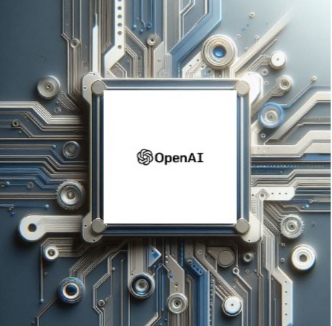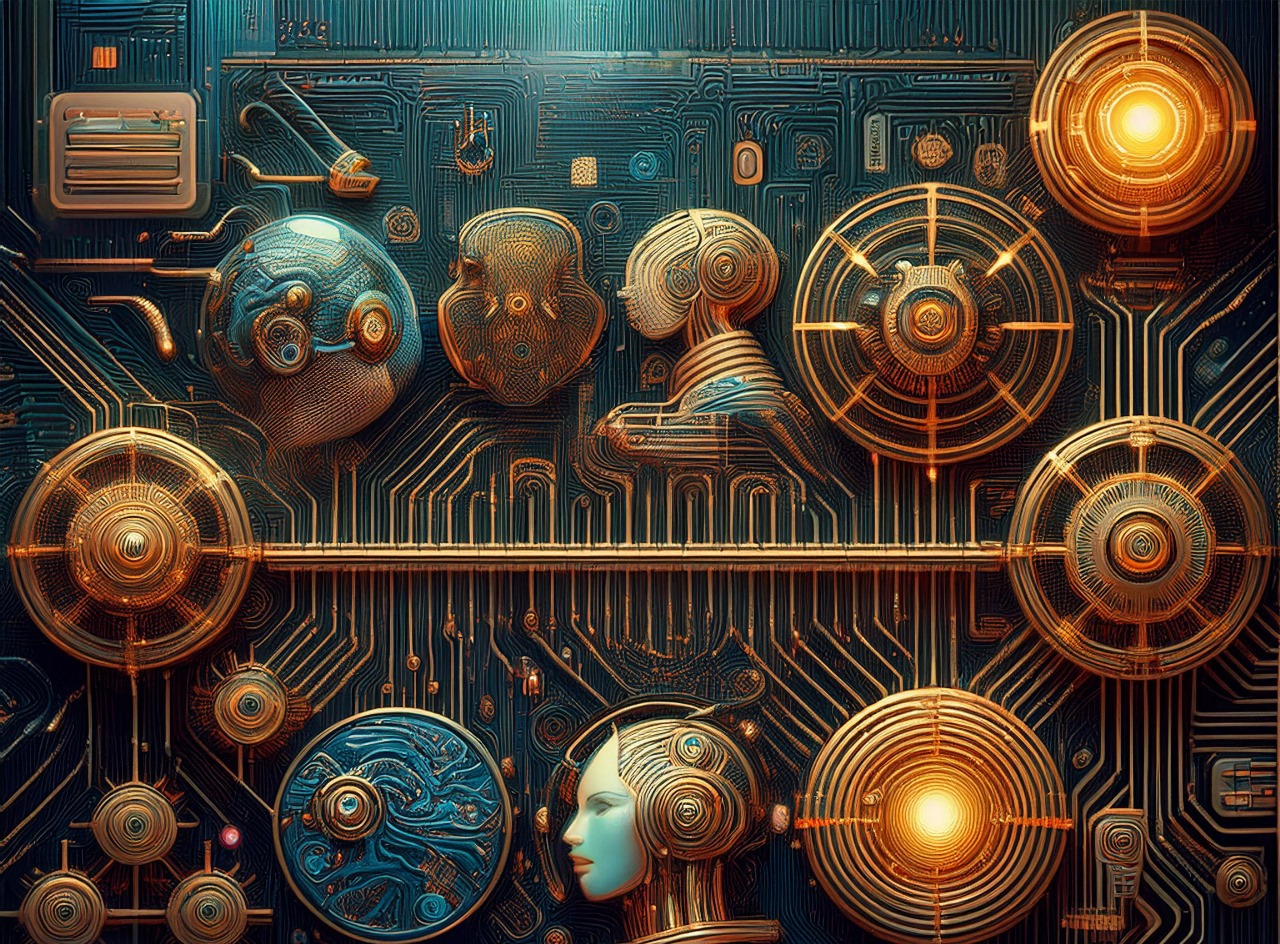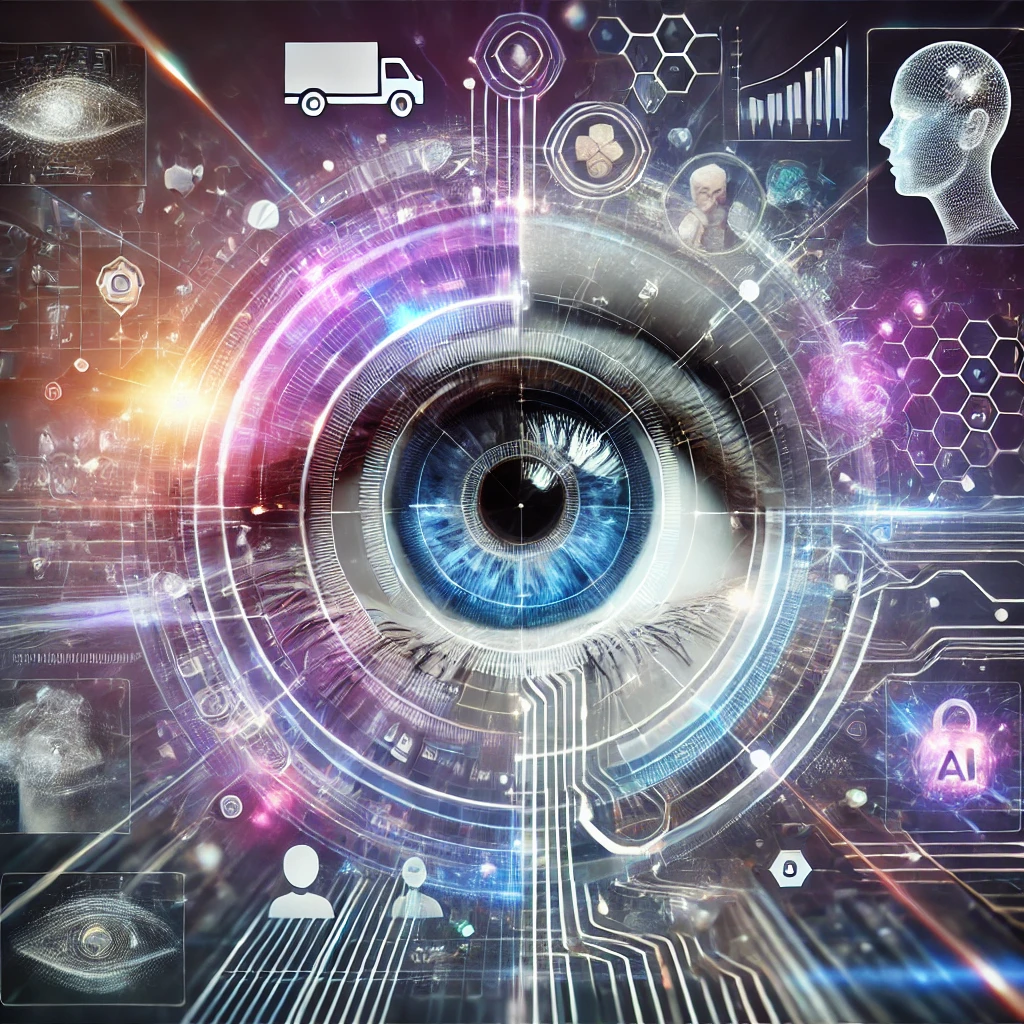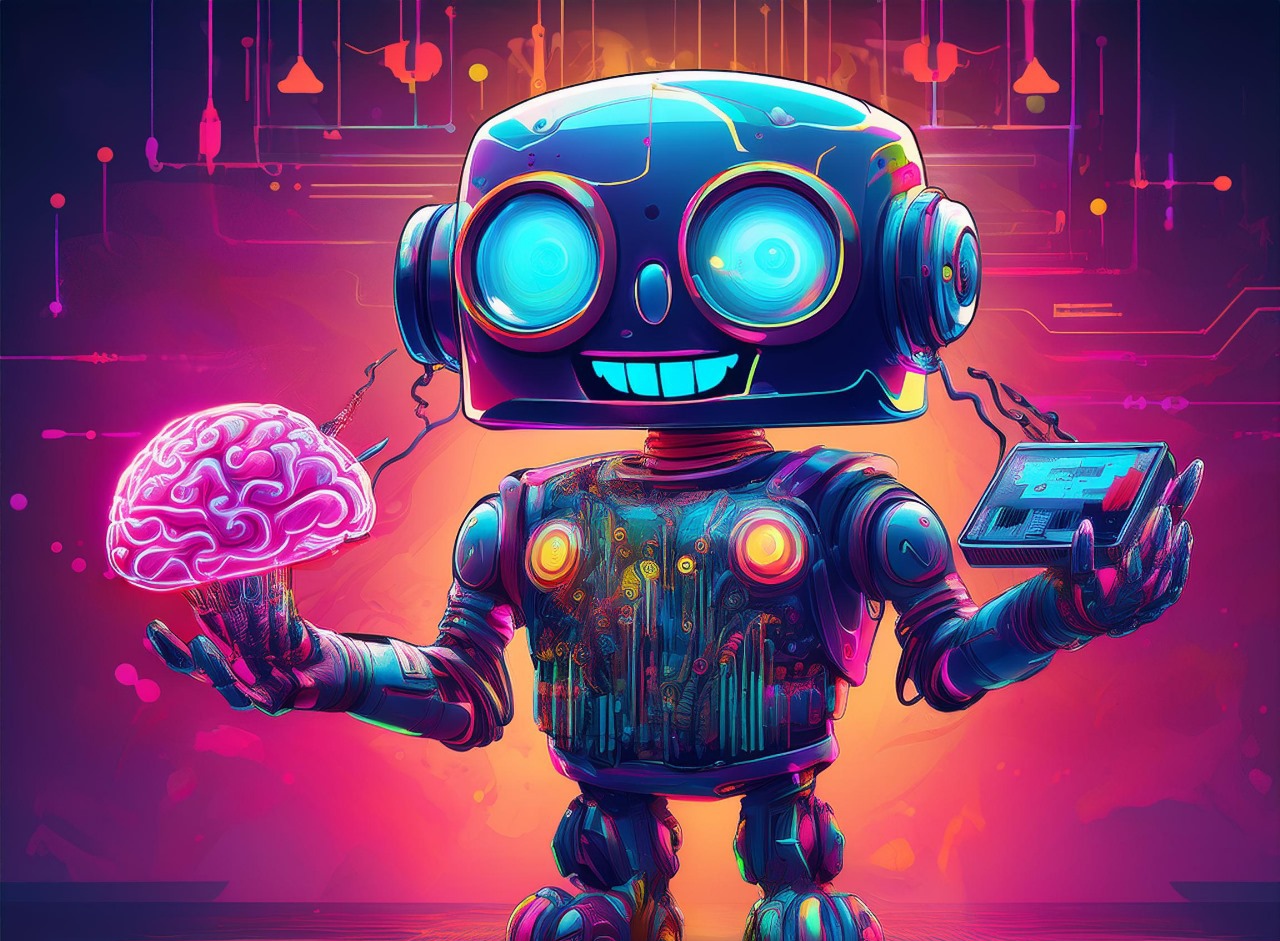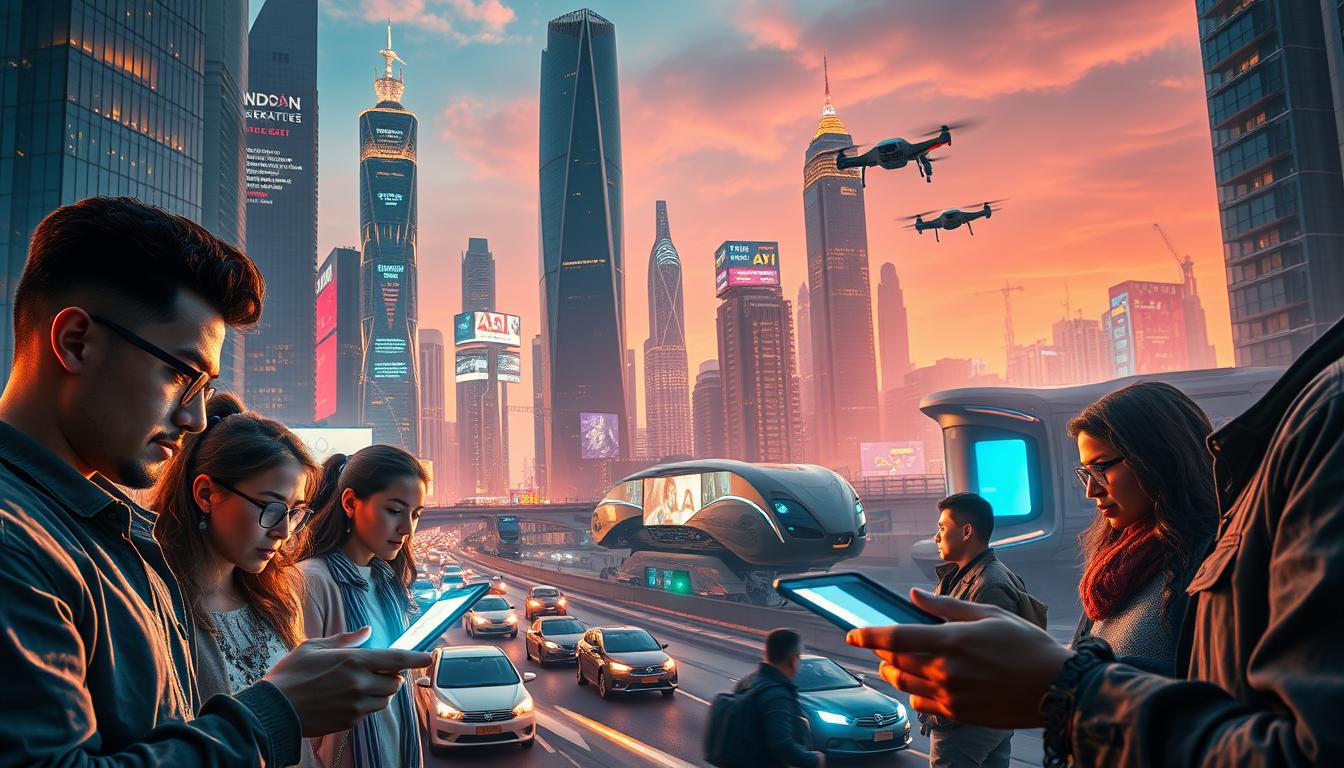You want to create your own AI-driven project or maybe you simply want to know more about it as a curious tech person. This blog is going to be helpful in how to use the tools offered by OpenAI and also get insights on its possibilities. Be it just starting at the ground level with understanding basics or rather proceeding into advanced applications where we are headed for now. What is OpenAI? Founded with a mission of ensuring that artificial general intelligence (AGI) benefits all humankind, OpenAI is the biggest artificial intelligence research laboratory and has come up with some of the most potent artificial intelligence tools ever made. They have managed a very high degree of accessibly in creating AI models. such as: – A series of AI models capable of understanding and generating human-like text are referred to as GPT (Generative Pre-trained Transformer). – DALL·E; The AI model that can develop images based on word descriptions. – Codex: an AI model which transforms natural language into program code thus making programming easy for everybody. How To Use OpenAi API For starters, begin by getting familiarized with OpenAI’s API within your environment (e.g., local machine). This will let you integrate these models into your applications allowing from developing chatbots powered by AI to auto-generating content. Initial Procedures to Start:OpenAI is a platform where members can form accounts: You sign up at a particular webpage for certain reasons. Obtain API Keys: Create API keys if you have an account so as to use the tools offered by OpenAI. Pick a Model: Depending on the context, choose the model that fits best–GPT for text and DALL·E for images while Codex is primarily used in coding. Integrate the Application Programming Interface: To develop anything, you will need to follow the instructions provided on how to integrate it in your projects. Creating Your First AI Chatbot using OpenAI One of most common uses of OpenAI’s GPT models is for chatbots with. Here is a simple guide to help you build your first AI chatbot. In Sequential Order Define the Purpose: Consider what functions your chatbot will serve–can be either customer support or virtual assistant or even as a story teller. Select a Platform: Choose the location where your bot will be found; this could be through websites, mobile applications or different messaging platforms. Set Up the API: By connecting with this API you will connect it to any GPT model. Design Conversations: Create prompts and answers that will direct how the bot communicates. Test and Refine: Your efforts should do continuous testing on your bot and make improvements in it that enhance its functioning. Getting Started with Creating Art Using DALL·E: A Beginner’s Guide: DALL·E is a state-of-the-art AI model that generates images from text. The revolutionary possibilities offered by DALL·E are limitless for anyone from artists to designers or even a curious individual interested in AI-generated art. Create Descriptive Prompts: The more details you provide in the description, the more precise the generated image will be. For instance, if you say “a futuristic city skyline at sunset”, then DALL·E will generate a unique picture based on what you have typed. See how perfect it is! Experiment and Explore: Try various prompts and experiment with different image variations created.Refine Your Art: Using generated images as a starting point and editing them using image editing software until they are polished would help. Fine-Tuning GPT Models for Unique Use Cases For advanced users, fine-tuning OpenAI’s GPT models is an excellent way to obtain highly customized results. Fine-tuning is essentially when you take a particular set of data and use it to train your model so that it aligns closely with the output you want. Steps for Fine-Tuning: Prepare Your Dataset: Collect data that relates directly to your needs, then format it accordingly. Leverage OpenAI’s Fine Tuning API: Refer to OpenAI’s documentation for instructions on using your dataset in order to fine-tune the model. Examine Model Performance: After fine-tuning the model,test its performance and adjust as necessary.Deploy the model: Incorporate the well-adjusted model to your application once you are happy with it. Industry use cases: How businesses are leveraging OpenAI for growth OpenAI’s tools have been transforming industries by enabling smarter automation, personalized customer experiences, and innovative product development. Examples of business applications: Customer support: AI chatbots powered by GPT models are enhancing customer service via instant and accurate responses Content creation- Time-saving is one of them because they are using this technology to produce blog posts, marketing copies and descriptions for products in businesses. Software development: Codex aids developers in generating automatic code snippets shortening their time for creation and making programming more open.Future trends in AI: what to expect from OpenAI As artificial intelligence keeps changing, OpenAI is among those making the world’s most innovative instruments and systems. Thus, here are some trends that one should watch out for.Improved Natural Language Understanding: Expect even more sophisticated language models which can grasp context and nuance even better than before. AI-Assisted Creativity: Tools such as DALL·E will become advanced too giving artists and designers greater powers. Wider Adoption of AI in Everyday Life: from home smart devices to personalized shopping experiences, AI gradually merges into day-to-day existence. OpenAI is an exhilarating adventure whose frontiers are limitless. This blog is about how to use OpenAI’s tools lessons – for a beginner or advanced learner. In addition to tutorials that are more elaborate and insightful, we will also be covering industries at the same time giving updates on the newest things happening in AI! Excited about detailed guides, industrial perspectives, and Artificial Intelligence advancements? Comment below “yes” and let us know what you’re interested in!
The Future of AI: Emerging Trends and Ethical Dilemmas.
As AI gets more powerful, it raises important ethical questions we must confront. One major issue is the possible bias in AI systems. Since AI learns from data, it can unintentionally pick up and amplify existing biases in that information. For instance, if an AI system is trained on data with racial or gender biases, it could yield results that discriminate against people such as refusing to give loans or hiring based on bias. To deal with this matter, creation of unbiased AI will require designing transparent and accountable systems. The other ethical concern is how AI affects individual privacy. With vast amounts of information that AI systems can analyze; there are chances for personal data being misused or even exploited. Clarified guidelines and regulations on individual privacy protection should be put in place in an increasingly AI-driven world. Additionally, the question of accountability is a major ethical dilemma. For instance, if an error occurs in an AI system, who is blamed for it? Is that the developers who developed it, companies that utilized it or users who counted on it? Such matters are intricate and require deep thought considering the pace at which artificial intelligence is advancing. AI & Job Market: Friend or Enemy? The entrance of AI is expected to affect labor markets significantly. While some professions may experience automation, this technology will create fresh job opportunities across different sectors. Jobs which have predictable patterns are primarily susceptible to automation technologies. For example, data entry, customer service, as well as certain legal research activities could all be taken over by these systems powered by artificial intelligence but this doesn’t necessarily imply massive losses of jobs So there might be changes in labor market as far as requirements go with regard to skills like ai creation and data analysis among others all becoming fashion trends nowadays. Workers willing to learn new things and adapt should expect favorable future in such economies influenced by AI. Besides that, another possibility is enhancement rather than replacement of human abilities through AI use. For example, doctors might use AI for better diagnosing diseases while educationists can personalize education sessions for students; likewise artists can rely on AI to think of novel ideas. The key to traversing this transition is to concentrate on retraining and enhancing the capabilities of the workforce, providing individuals with necessary tools and knowledge they need to thrive in an ever-changing environment. AI and Society: Shaping a Collaborative Future As artificial intelligence increasingly becomes part of our lives, it is important to consider the way we want this technology to contribute towards society. The future of AI is not merely about technological development; instead, it is largely dependent on how we choose to utilize that technology as a means of improving our world. A possibility for example would be an AI and human people collaboration where these two parties work together towards common targets. Such partnerships between machines and humans may bring forth new forms of creativity, innovation as well as problem-solving strategies that had not been thought possible earlier. By analyzing large amounts of environmental data and predicting possible trends over time, AI could assist scientists in addressing complicated problems such as climate change. Furthermore, in education, teachers could benefit from using artificial intelligence systems so as to offer personalized instructional opportunities geared at every student’s unique requirements. Within workplaces there is a chance for automation to replace repetitive jobs leaving humans with more interesting ones – thus freeing them up for things which are much enjoyable although being unpaid (like writing poetry). In this way more balanced working life characterized by employment satisfaction will emerge where technology supports rather than supplants human input. The future of AI is primarily determined by the actions we take today. Through ethical priority, labor investment in education and training and emphasis on a middle- of- the-road approach, we can guarantee that benefit to all and a better future. The AI Revolution Should Be Embraced The AI revolution has arrived, it touches on every single area of our lives. Healthcare, finance, travel or entertainment: everything happens more efficiently than ever before. Thanks to artificial intelligence. However, there are some questions raised by such rapid advancements which must be answered. Those who understand the basics of AI will be able to explore various practical applications while also taking into consideration its moral dimensions. One thing is for sure about future outlooks regarding this subject matter, disregarding this would mean missing out on great opportunities in life. The coming years will not only see the use of artificial intelligence but also form part of it in creating our tomorrow’s world where boundaries do not exist any more. Entrepreneurs and students alike should start using AI now that they have not been left behind in regard with this issue at hand.
The history of AI: A trip down history lane
The journey started with AI being just an imagination in science fiction. However, it has grown to be part and parcel of our daily lives. This blog post seeks to highlight some outstanding points that have characterized artificial intelligence over time as well as showing its implications on today’s human life. The beginning days: Philosophical roots and initial concepts. The idea of having creatures that are not human is as old as mankind itself. As such, artificial intelligence was founded on thoughts about the nature of human thinking and its mechanical imitation by René Descartes and Thomas Hobbes in 17th and 18th centuries respectively.The Birth of AI: The 1950s and 1960s Artificial intelligence research began properly in the middle of the 20th century.In 1950, Alan Turing introduced Turing test for proving whether a machine can carry out tasks which we associate with human capabilities. In 1956 during the Dartmouth Conference; men such as John McCarthy; Marvin Minsky; and Claude Shannon met for discussing intelligent machines’ possibilities, hence coining the term ‘artificial intelligence’. The Rise and Fall: AI Winters The first excitement of AI spurred great investment and achievements over the 1960s to 70s. However, several setbacks impeded development due to inflated hopes and restricted processing abilities. These are referred to as “AI winters”. When did renaissance happen? According to history, it begins from the 1980s to the early 2000s, in which time there was a revival of artificial intelligence research through expert systems designed to simulate human decision making using rule-based algorithms.This was followed by a transition in the 1990s and early 2000s characterized by further advancements resulting from machine learning algorithms as well as large datasets. The Modern Era: Deep Learning and Real-Time ApplicationsDeep learning – a subset of machine learning involving neural networks – was responsible for AI’s real breakthrough during the 2010s where it processed vast amounts of data. Image recognition, natural language processing, speech recognition alongside autonomous systems benefited tremendously from this revolution.Today, AI is built into different real-time applications including virtual assistants like Siri and Alexa or recommendation systems at Netflix and Amazon sites among others. Real-time data processing makes it possible for immediate insights provided by AI enabling them to make spontaneous decisions; hence revolutionizing industries including health care, finance, and transport. Recent Breakthroughs 1. Generative AI RevolutionThe generative AI tools such as ChatGPT have continued to leap forward making them widely adopted. These tools are now embedded into most commonly used applications from writing emails to creating overall presentations. 2. Multimodal AIThere has been remarkable progress made on AI systems that process and generate multiple input types such as text, images, or video. It promotes better interaction between man and machine. 3. Explainable AIIn recent years, significant strides have been made towards making it possible for us to know what goes into the working of an AI system. Users’ understanding of how machines arrive at their decisions is key to building trust in them, as well as considering ethical issues. 4. AI In Health CareThe role played by artificial intelligence in health care has seen a lot of growth with algorithms diagnosing diseases accurately and predicting patient outcomes4. Thereby improving patient care and making medical processes smoother. 5. AI-Powered RoboticsAI-powered robots have become more skilled at doing intricate tasks besides communicating seamlessly with humans. Manufacturing industry and personal assistance among others stand out as areas where innovations have taken place in this regard for example standardization procedures used in logistics management sectors among others. 6. Ethical AI and RegulationBuilding AI systems which are fair, transparent, and accountable has become a major focus. New regulations and ethical frameworks are emerging in order to guarantee a responsible use of AI. 7. Customized AI ModelsThere are smaller and more efficient AI models being developed which can easily cater for customizing of specific tasks thus making AI available to organizations and individuals. These include advancements in open-source AI models. 8. AI in Creative ArtsCreative AI tools are becoming increasingly popular among artists and creators, as they try to exploit their new options. 9. AI in Everyday DevicesEveryday devices include smartphones, home assistants and pedagogical objects as AI technology is being embedded in them for improved capabilities and more naturalistic use. Advanced photo editing and personalized recommendations are some of these features. 10. AI for Climate and EnvironmentAI is being employed in addressing the environmental problems, such as forecasting climate patterns and refining energy consumption. This kind of application avails itself to more sustainable solutions for the future4. These breakthroughs show how fast AI is developing and how it is having a larger influence on all sides of our existence. The Future: AI’s Growing Influence It can’t be denied that AI is transforming humanity’s destiny. The interaction between humans and machines will become tighter as they respond to each other in real-time due to the use of big data for processing everything humans know. This interdependence between intelligence factories and brains has a potential to yield new breakthroughs not only in self-driving cars but also in personalized medicine whose future we cannot see yet.
Investigating Computer Vision: How Artificial Intelligence Sees and Understands the World.
What is Computer Vision? The Eyes of Artificial Intelligence Computer Vision is a field of AI that empowers machines to decipher and settle on choices in view of visual information. At the end of the day, it’s tied in with helping computers to see and comprehend the world as we do. However, not at all like people, who depend on a long period of encounters to figure out what they see, man-Artificial Inteligence depends on information and algorithms. At its center, computer Vision includes preparing AI frameworks to perceive items, faces, and scenes from pictures or recordings. For example, when you tag a friend in a Facebook photo or when your phone opens utilizing facial acknowledgment, that is Computer Vision working. The innovation behind Computer Vision is a blend of picture handling and machine learning. It includes feeding the artificial intelligence framework with a massive amount of labeled pictures — consider millions pictures of dogs, vehicles, trees, and everything in between. The AI then, at that point, figures out how to recognize examples and highlights that recognize one item from another. Real-World Applications of Computer VisionComputer Vision is changing businesses in manners that were once thought unthinkable. The following are a couple of instances of how it’s being utilized today. Facial Recognition: This innovation is utilized in security frameworks, where it can recognize people in a group or award admittance to gadgets. It’s likewise being utilized in retail to customize shopping encounters by perceiving repeat clients. Medical Imaging: In medical services, Computer Vision is assisting specialists with dissecting clinical pictures like X-rays, MRIs, and CT scans. AI frameworks can distinguish irregularities and sicknesses with a degree of exactness that frequently outperforms human specialists. Self-Driving Vehicles: Autonomous vehicles depend intensely on Computer Vision to explore streets, perceive traffic signs, and stay away from obstacles. The AI processes visual information from cameras and sensors to pursue real-time decisions. Agriculture: Farmers are utilizing Computer Vision to monitor crops and animals. Drones furnished with AI can overview enormous fields, recognizing regions that need consideration, for example, where plants are sick or soil is excessively dry. Retail and Web based business: Online retailers are utilizing Computer Vision to analyze client conduct and streamline item shows. AI can follow which things are gotten and returned, assisting businesses with grasping customer preferences. Computer Vision isn’t just about seeing — it’s tied in with understanding and interpreting visual information in a manner that can be utilized to pursue informed decisions. The Future of AI in Visual Understanding. The future of Computer Vision is loaded up with potential outcomes. As artificial intelligence frameworks become further developed, they will actually want to decipher more mind boggling scenes and pursue more nuanced decisions. Envision a reality where AI can not only recognize objects but also understand context and emotions.For instance, AI could be utilized to screen public spaces and identify strange way of behaving, assisting with forestalling violations or answer crises all the more rapidly. In medical services, AI could examine clinical pictures progressively during medical procedures, providing surgeons with critical information that could save lives. Another exciting region is augmented reality (AR), where AI could upgrade our visual experiences by overlaying advanced data onto this present world. This could be utilized in all that from gaming to education, making connections more immersive and engaging As AI keeps on developing, the line among human and machine vision will blur, prompting new advancements and applications that we can start to envision.
The Basics of AI: Figuring out Man-made consciousness.
Welcome to the time of Man-made brainpower (Artificial intelligence), where machines are as of now not simply devices however are becoming buddies, collaborators, and some of the time even leaders in our lives. However, what precisely is man-made intelligence, and for what reason is it so significant? Artificial Intelligence is a wide field of computer science zeroed in on making frameworks that can perform undertakings that generally require human knowledge. These errands incorporate gaining for a fact, figuring out regular language, perceiving examples, and simply deciding. Simulated intelligence isn’t just about robots that can talk; it’s tied in with making brilliant frameworks that can learn and adjust over the long run. Envision requesting that your virtual helper play your main tune, and it knows precisely which one to pick in light of your state of mind or the hour of day. Or on the other hand consider self-driving vehicles that explore traffic, keeping away from deterrents with the accuracy of a carefully prepared driver. These are regular instances of artificial intelligence at work. Yet, how does Artificial intelligence really work? It’s not wizardry — it’s a complicated mix of calculations, information, and computational power that permits machines to emulate human perspectives. At its center, computer based intelligence is tied in with making machines that can think, learn, and simply decide — very much as we do. For what reason Would it be advisable for you to Think often About AI? Artificial intelligence is not generally restricted to the domains of tech monsters or examination labs; it’s implanted in the gadgets and administrations we utilize day to day. Regardless of whether you’re mindful of it, Artificial intelligence is molding your general surroundings. It’s in your cell phone, your vehicle, your home, and, surprisingly, your PCP’s office. Think about the last time Netflix suggested a film you loved or how your email sift through spam naturally. These are little yet huge instances of how artificial intelligence is making your life simpler, more customized, and more associated. A intelligence is additionally driving development in ventures like medical care, money, and assembling, where it’s being utilized to analyze illnesses, oversee speculations, and smooth out creation processes. As computer based intelligence keeps on developing, its effect on our lives will just develop. Anyway, for what reason would it be advisable for you to mind? Since understanding Artificial intelligence is vital to exploring what’s to come. Whether you’re a tech lover, a business visionary, or just somebody inquisitive about the world, knowing how artificial intelligence works will give you an edge in a world that is progressively determined by keen machines. Artificial intelligence comes in two principal types: Narrow artificial intelligence and General artificial intelligence, each with its own abilities and applications. Narrow Artificial intelligence: The Master Subject matter expert Narrow AI, otherwise called Weak AI, is intended to play out a particular undertaking all around well. It doesn’t have general knowledge yet succeeds in its assigned region. Consider Narrow AI that one companion who is a specialist in one subject yet could battle with anything beyond it. For instance, your cell phone’s voice partner, as Siri or Alexa, is a type of Narrow AI. It can comprehend and answer voice orders, set updates, play music, and even response questions. However, assuming that you requested that it drive your vehicle, it would be totally lost. Different models incorporate facial acknowledgment frameworks, language interpreters, and the algorithms that power proposal engines on stages like Netflix and Amazon. Narrow AI is everywhere, and it’s turning out to be more complex continuously. It’s perfect at taking care of explicit issues, and its presence in our day to day routines is simply going to increment. General AI : A definitive All-Rounder General AI, otherwise called Strong AI, is the stuff of sci-fi. Dissimilar to Narrow AI, General AI can comprehend, learn, and apply insight across a large number of undertakings, similar as a person. It’s not restricted to a particular capability but rather can think, reason, and take care of issues in different regions. Envision a AI that might not just help you with day to day undertakings at any point yet additionally compose verse, debate philosophy, and cook a gourmet meal— all while learning and adjusting as it goes. This is the fantasy of General Artificial intelligence — a machine that has the full scope of human mental capacities. While General artificial intelligence is a captivating idea, it’s still in the exploration stage. We’re not there yet, yet the headway being made in man-made intelligence research is pushing us nearer to this reality. Researchers and specialists are dealing with making machines that can learn and think like people, and keeping in mind that we’re still quite far from accomplishing genuine General AI, the potential outcomes are energizing — and somewhat overwhelming.

